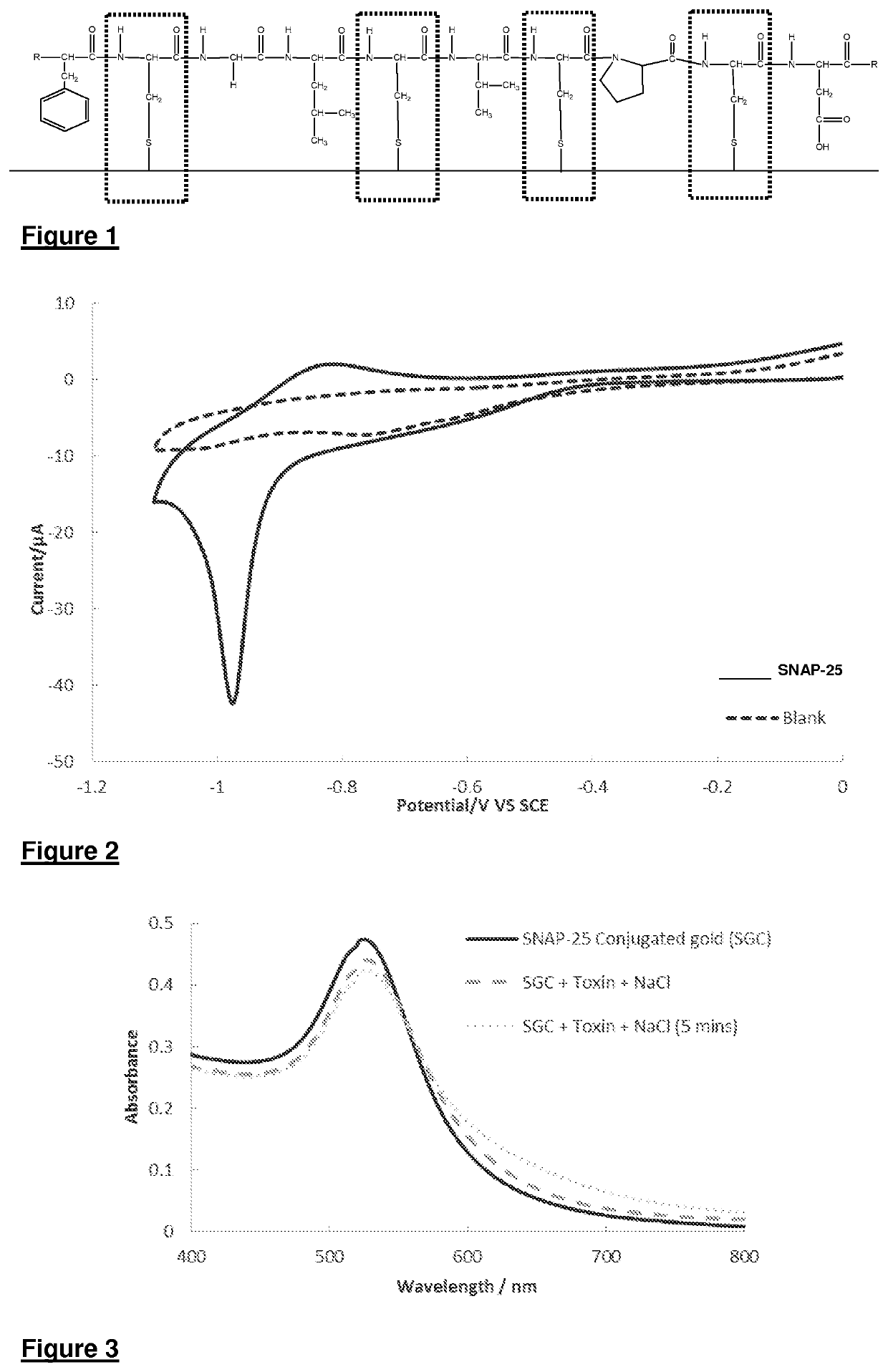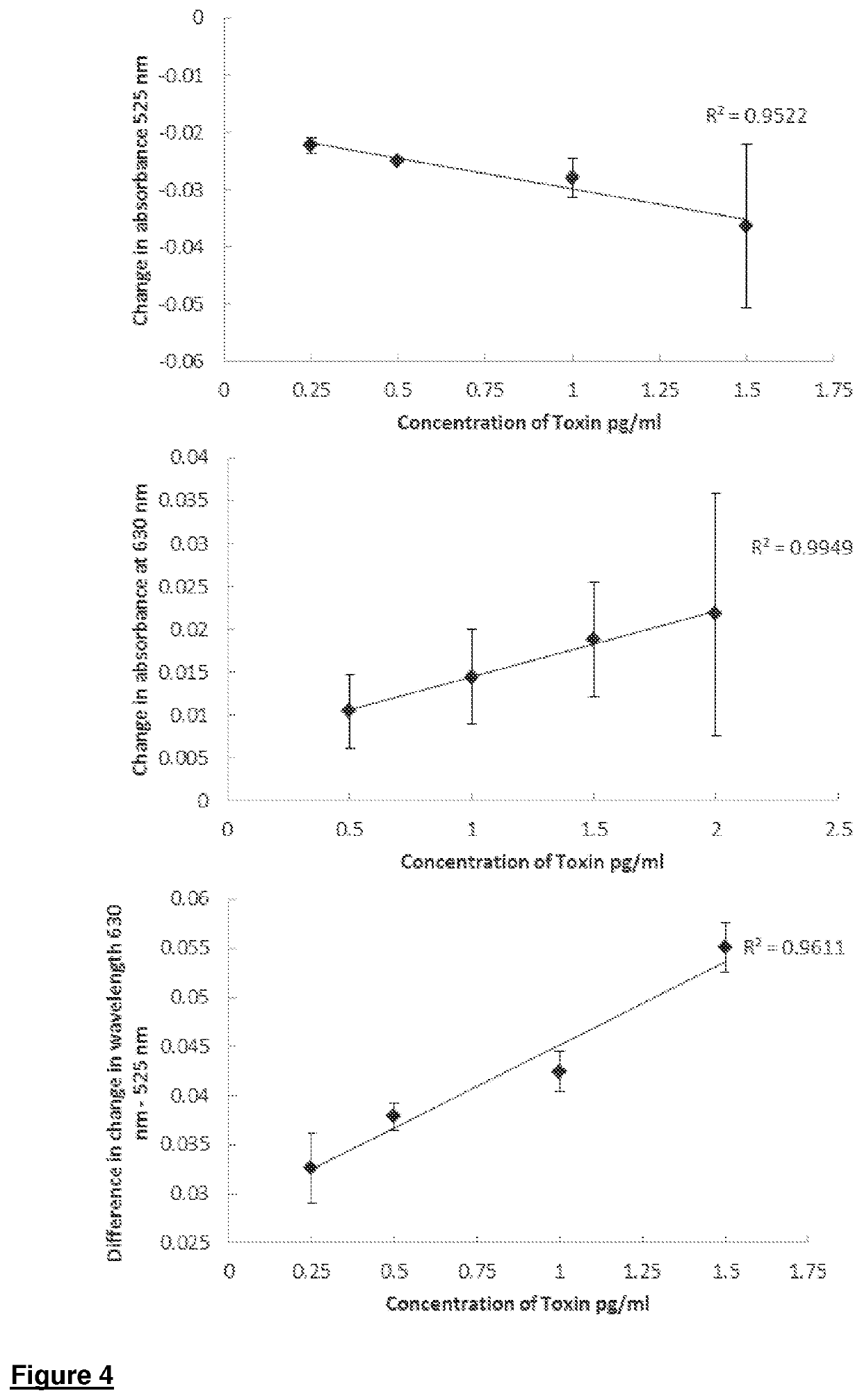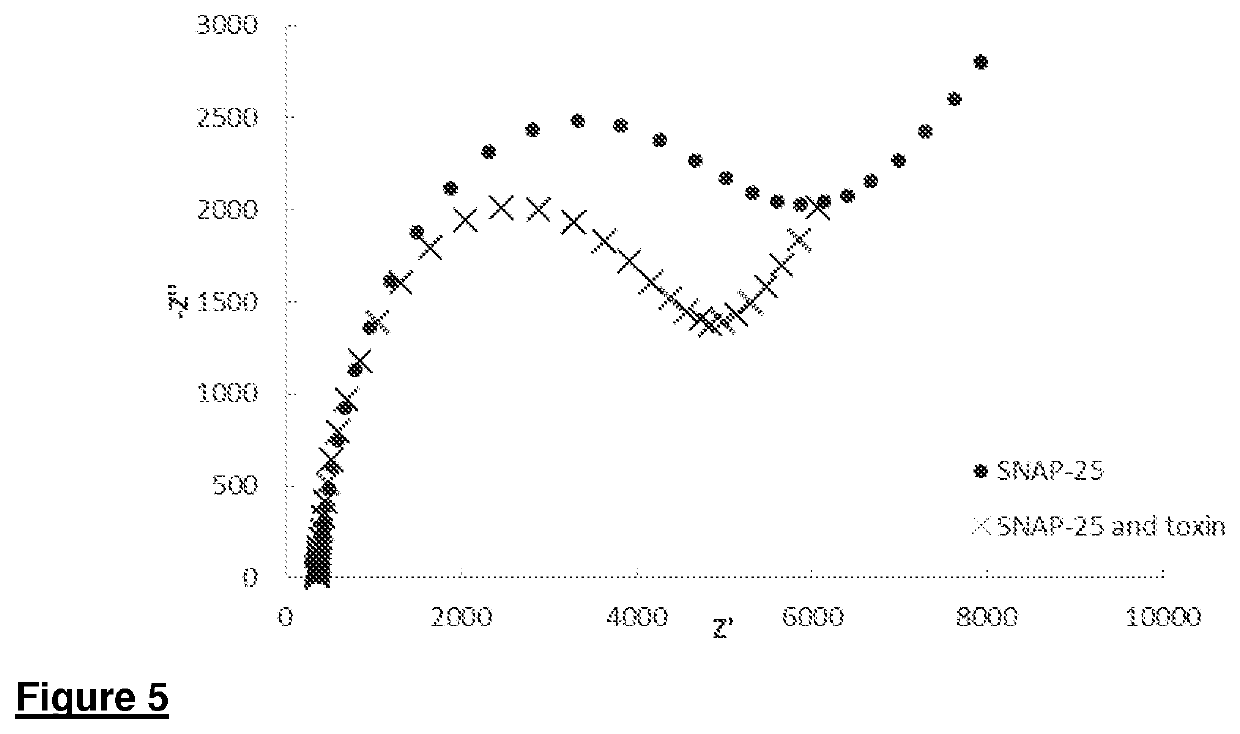Sensors
a sensor and sensor technology, applied in the field of sensors, can solve the problems of inability to develop reliable methods, time-consuming and unsuitable trials, and inability to accurately detect the effect of the sensor, and achieve the effect of effective and quick sensor
- Summary
- Abstract
- Description
- Claims
- Application Information
AI Technical Summary
Benefits of technology
Problems solved by technology
Method used
Image
Examples
example 1
lloidal Gold
[0046]In this first experiment, gold colloids were coated with SNAP-25 peptides and then placed in a buffer solution which turned blue in colour when exposed to botulinum toxin.
[0047]Gold colloids have a negative charge causing them to repel each other in solution staying red in colour absorbing at 525 nm. When NaCl is added to uncoated colloids, this neutralises the charges causing them to clump together turning blue in colour. Coating the colloids with substrates such as proteins protects from the neutralising charges keeping the colloids in solution. When the toxin is added a portion of SNAP-25 is cleaved off, which means the colloids are not as well protected allowing for the aggregation of colloid particles turning blue in colour absorbing in the 600-700 nm region. The following protocol was followed:[0048]a) Colloidal gold and phosphate buffer (10 mM, pH 8) solution were mixed in a 1:1 ratio and placed at 37° C. to equilibrate.[0049]b) SNAP-25 (0.5 μg / ml) was added...
example 2
emical Impedance Spectroscopy
[0057]In this second experiment, gold electrodes were coated in SNAP-25 proteins. Rather than the SNAP-25 protein cleavage by the botulinum neurotoxin being detected by UV visible spectrometry, the cleavage event was detected by changes in impedance (Z) when the sample was placed in an electrochemical cell.
[0058]Impedance is a measure of a circuits ability to resist the flow of electrons in an alternating current. Using a redox probe the amount of oxidation / reduction can be measured at the gold surface. Forming the protein layer on the gold surface blocks some of the redox probe from approaching the surface and undergoing the redox reaction producing large impedance.
[0059]In this experiment, gold electrodes were annealed and incubated in a solution of SNAP-25 for 48 hours at 5° C. The electrodes were rinsed and dried before being sealed in an electrochemical cell and the impedance measured in redox probe (0.5 mM Ferri / Ferrocyanide, 0.1M KCl). The redox p...
PUM
| Property | Measurement | Unit |
|---|---|---|
| pH | aaaaa | aaaaa |
| color | aaaaa | aaaaa |
| electrically conductive | aaaaa | aaaaa |
Abstract
Description
Claims
Application Information
 Login to View More
Login to View More - R&D
- Intellectual Property
- Life Sciences
- Materials
- Tech Scout
- Unparalleled Data Quality
- Higher Quality Content
- 60% Fewer Hallucinations
Browse by: Latest US Patents, China's latest patents, Technical Efficacy Thesaurus, Application Domain, Technology Topic, Popular Technical Reports.
© 2025 PatSnap. All rights reserved.Legal|Privacy policy|Modern Slavery Act Transparency Statement|Sitemap|About US| Contact US: help@patsnap.com



